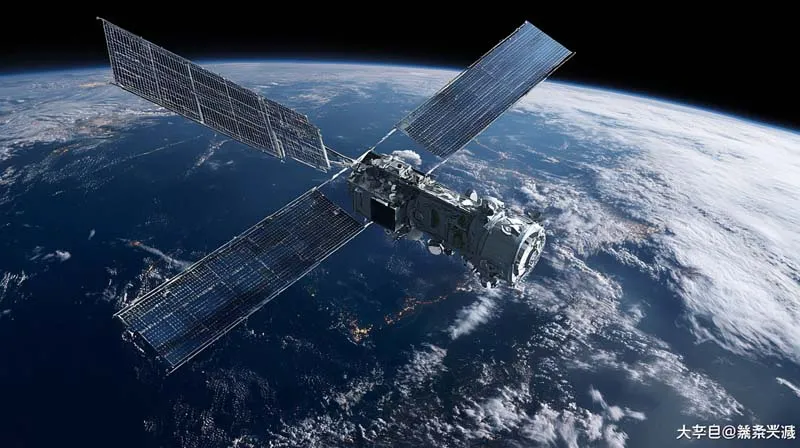A Game-Changer for the IoT Industry
The IoT industry is transforming the global economy. It drives smart, digital solutions. According to IDC, global IoT spending hit $805.7 billion in 2023, up 10.6%. China’s IoT market will likely exceed $1 trillion by 2025. Meanwhile, 5G and satellite communication are key catalysts. They enable seamless connectivity across air, land, sea, and space. From smart cities to industrial automation, these technologies reshape industries.

Technical Foundation: The Power of 5G and Satellite Synergy
The IoT industry thrives on robust communication. 5G delivers high speed, low latency, and massive connectivity. It supports up to one million devices per square kilometer. By June 2024, China built 3.917 million 5G base stations, leading globally. Meanwhile, satellite communication fills coverage gaps. Low-orbit satellites, like Starlink and China’s “Starnet,” connect remote areas, oceans, and skies.
Together, 5G and satellite communication revolutionize IoT. For example, China Mobile uses 5G for smart port operations. Globally, Maersk leverages satellite IoT for supply chain efficiency. This synergy, paired with low-power networks like NB-IoT, ensures reliable, global connectivity. Thus, it paves the way for a connected world.

Industry Applications: Transforming Sectors with Connectivity
5G and satellite communication unlock diverse IoT applications. They reshape industries. Here are key examples:
1. Smart Cities: Boosting Urban Efficiency
5G powers real-time traffic monitoring and smart lighting. It optimizes city operations. For instance, Beijing and Shanghai use 5G for dynamic traffic signals. Satellites extend coverage to rural areas. They support smart streetlights and environmental sensors. Consequently, cities become smarter and more connected.
2. Industrial IoT: Driving Smart Manufacturing
5G enables fast, reliable factory networks. It supports predictive maintenance and quality checks. Siemens’ MindSphere platform uses 5G for production insights. Satellites connect remote factories. They ensure real-time data flow. As a result, global manufacturing becomes more efficient.
3. Agriculture and Marine: Advancing Sustainability
In agriculture, 5G and satellites enable precision farming. Sensors monitor soil and crops. Drones optimize irrigation. China boosts crop yields with IoT. Satellites track fishing vessels and ocean conditions. Globally, companies like Maersk optimize shipping routes. This reduces fuel use.
4. Emergency Response: Saving Lives
Disasters often disrupt networks. 5G and satellites provide critical connectivity. Satellites deploy temporary networks in disaster zones. China uses Beidou and 5G for rescue operations. Globally, similar systems aid hurricane and wildfire responses. Thus, IoT saves lives.
Per the World IoT Conference, China’s IoT connections hit 3 billion in 2024. By 2027, mobile IoT connections may exceed 3.6 billion. These numbers highlight the transformative power of 5G and satellite communication.
Trends: Shaping the IoT Future
The IoT industry is evolving fast. 5G and satellite communication drive three key trends:
1. 6G and AIoT Convergence
6G, expected by 2030, promises ultra-low latency. It will enhance IoT intelligence. AIoT integrates AI with IoT devices. Smart homes will analyze user behavior. This optimizes energy use. Thus, 6G and AIoT will redefine connectivity.
2. Low-Orbit Satellite Expansion
Low-orbit satellite networks are growing. By 2027, over 20,000 satellites may orbit Earth. China’s Starnet and Starlink lead the charge. They lower costs and expand coverage. Remote areas and oceans will gain seamless IoT access. This unlocks new possibilities.
3. Standards and Security Focus
Global IoT needs unified standards. China aims to set 30+ IoT standards by 2025. It will contribute to 10 international standards. IEEE and 3GPP also push standardization. However, challenges like data privacy remain. Strong standards will ensure secure growth.
Challenges: Navigating Obstacles
Despite progress, challenges persist. Spectrum resources are scarce. Global coordination is essential. Satellite communication costs remain high. Lowering them is critical for adoption. Moreover, cross-border data raises privacy concerns. Compliance is vital. To address these, industries must innovate. Governments should streamline policies. This ensures sustainable IoT growth.
Outlook: A Connected Future Awaits
The IoT industry is at a turning point. 5G and satellite communication will unlock new applications. Global logistics, smart healthcare, and autonomous aviation will thrive. China leads with its 5G and Starnet initiatives. By 2030, 6G and AI will deepen IoT integration. They will create a truly connected world.
To seize this opportunity, businesses must invest in innovation. Governments should support spectrum allocation and subsidies. The IoT industry is poised for greatness. 5G and satellite communication will drive a smart, global future.

About EELINK Communication
The IoT industry thrives on innovation. EELINK Communication stands at the forefront. It specializes in wireless IoT solutions. With over 20 years of expertise, EELINK develops IoT hardware and software. Its products include temperature and humidity monitoring platforms. Services span asset management, vehicle security, insurance, and cold chain logistics. EELINK’s mission is clear: connect everything through smart technology. It delivers reliable, efficient solutions. By addressing client needs, EELINK drives value. The company continues to innovate. It meets the evolving demands of the IoT industry.

